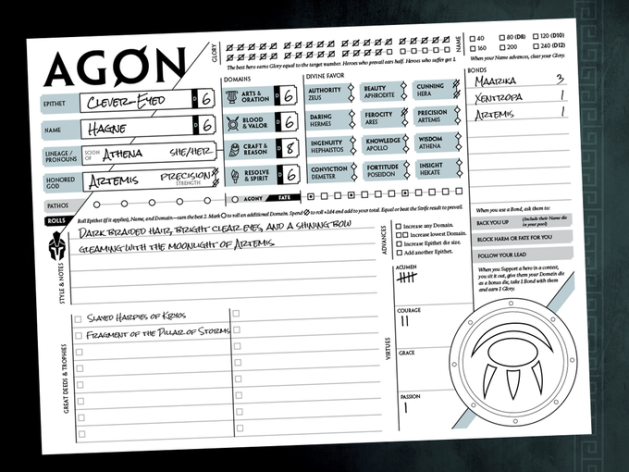Odin:
Chief Executive Officer and King
“tyr of inspiration, passion, and sacrifice”
Thor:
Frey of Battle and Champion
“tyr of thunder, sky, and might”
Loki:
Chief Analytics Officer and Vizier
“tyr of the weird, illusion, and change”
Frygga:
Chief Information Officer and Scholar (Wife of Odin and Queen)
“tyra of prophecy, magic, and love”
Brigid:
Chief Creative Officer and Bard
“tyra of expression, flame, and healing”
Sif:
Chief Financial Officer and Treasurer
“tyra of agriculture, hearth, and gold”
Wayland:
Chief Technology Officer and Smith
“tyr of smithing, education, and science”
Uller:
Chief Operations Officer and Seneschal
“tyr of frost, ranged combat, and oaths”
Heimdall:
Chief Security Officer and Guardian
“tyr of perception, travel, and protection”
Temujin:
Chief Martial Officer and General (Scion of Thor)
“tyr of empire, war, and iron”
Valfreya:
Freya of the Ljosalfar (daughter of Frey Ingwe and Gerd)
“tyra of fertility, health, and sun”
Kunnalfa:
Freya of the Dvergar (daughter of Thrud and Alviss)
“tyra of engineering, darkness, and earth”
(tyr/a meaning elite god of and frey/a which means lord/lady)
The weakest of the Twelve is far more powerful and dangerous than any two lesser Gods as the mantle of rank grants tremendous might and only the best can hope to enjoy the title for long or can handle the intense responsibility over the cosmos.
Odin has remained as the highest for nearly a thousand years and was one of the Three Most High who led the battle against Ymir in the first Titan war and used the Titan’s lifeforce to craft the Nine Worlds into their current form and imprison most of the other Titans until recently.
Uller has stood as the Highest in Odin’s stead in ancient times and more recently during the retreat from Midgard a thousand years ago and is trusted as leader while Odin or Frygga is unavailable.
Wayland, Brigid, and Kunnalfa share aspects of the “art of making” and their Scions tend to either work together extremely well or become dangerous rivals. Those who focus on exquisite design, high cost, and high production value tend to follow Brigid while pragmatic mass production and good value tends to be the mindset of Kunnalfa. Wayland creates the initial ideas, research, and inventions that both Goddesses use in their creations. In the past he crafted many of the mightiest relics of the Aesir and worked closely with Dvergar smiths during the second Titan war and became a prominent king in Elfame during his rise as the first Scion to achieve full Apotheosis. His exact lineage remains unknown.
A Scion of Kunnalfa’s “recent” influence in the invention of the atomic bomb has had a large social impact on the Nine Worlds leading to even more dangerous weapons.
The Twelve Most High stand in power where once the Twelve Titans of Antiquity did.


 I’d like to see more epithets get added as it can be daunting for some players to come up with good descriptors. I’d really recommend taking a look at the new Cypher rulebook for ideas if they don’t and then just give it a divine greek twist or go and look up epithets used by your divine ancestor or even look at other pantheons like the Celts such as Lugh Lámfada “of the Long Arm” and Samildánach “Equally Skilled in Many Arts” (basically means jack of all trades in today’s speech).
I’d like to see more epithets get added as it can be daunting for some players to come up with good descriptors. I’d really recommend taking a look at the new Cypher rulebook for ideas if they don’t and then just give it a divine greek twist or go and look up epithets used by your divine ancestor or even look at other pantheons like the Celts such as Lugh Lámfada “of the Long Arm” and Samildánach “Equally Skilled in Many Arts” (basically means jack of all trades in today’s speech).